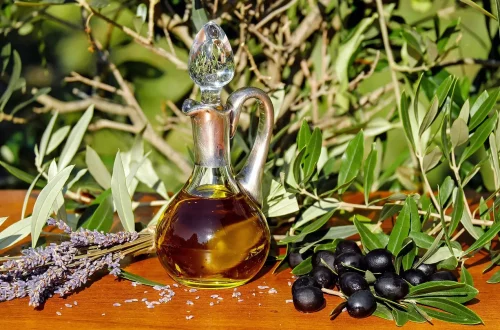
Understanding the Effects of a Yellow Sac Spider Bite with Pictures
Understanding the Effects of a Yellow Sac Spider Bite with Pictures
When it comes to the world of arachnids, the yellow sac spider is often overlooked, yet it plays a significant role in the ecosystem as a predator of insects. This small spider, typically found in gardens and homes, can incite fear due to its bite, which has garnered attention among those who encounter it. The yellow sac spider, belonging to the Cheiracanthium genus, is primarily known for its pale yellow to greenish coloration and its characteristic behavior of constructing silk sacs where it rests during the day.
Though it is not considered a major threat to humans, understanding the potential effects of a yellow sac spider bite is crucial for those who may inadvertently cross paths with this arachnid. As with many spider bites, the symptoms can vary from person to person, influenced by individual reactions and sensitivities. The bite may lead to localized pain and swelling, but in some cases, it can result in more serious complications.
In this article, we will delve into the characteristics of the yellow sac spider, the nature of its bite, and practical measures to take if bitten. By shedding light on this often-misunderstood creature, we hope to alleviate fear and promote informed responses to encounters with yellow sac spiders.
Identifying the Yellow Sac Spider
Identifying the yellow sac spider is the first step in understanding its behavior and potential risks. These spiders are relatively small, with adults measuring between 1/4 to 1/2 inch in body length. Their most distinguishing feature is their pale yellow or greenish hue, which helps them blend into their surroundings, particularly in vegetation.
The yellow sac spider has long, slender legs that can be as much as three times the length of its body. The legs are usually a shade lighter than the body, which can help in distinguishing it from other similar-looking spiders. Additionally, these spiders have a unique eye arrangement with eight eyes in two rows, which is characteristic of the species.
These spiders are not aggressive and typically only bite when they feel threatened. Their habitat ranges from gardens, fields, and wooded areas to indoor spaces. They often create silk sacs, which serve as both a retreat and a nursery for their young. Understanding these identifying features can help individuals recognize the yellow sac spider and avoid unnecessary panic when encountering one.
The Symptoms of a Yellow Sac Spider Bite
When bitten by a yellow sac spider, individuals may experience a range of symptoms. Initially, the bite may be painless, leading many to remain unaware of the bite until later symptoms appear. As time progresses, localized pain and swelling around the bite site can develop. The area may also become red and warm to the touch.
Some individuals report a burning sensation, which can be quite uncomfortable. In more severe cases, the bite might lead to the formation of blisters or ulcers at the site, causing prolonged discomfort. It’s important to note that while most bites will heal without complications, a small percentage of people may experience an allergic reaction, resulting in more intense symptoms such as itching, rash, or even difficulty breathing.
In rare cases, bites from yellow sac spiders may lead to necrotic skin lesions, resembling those caused by more venomous spiders. These complications can be alarming and may require medical attention. It is advisable to monitor the bite closely and seek medical assistance if symptoms worsen or do not improve within a few days.
Treatment Options for Spider Bites
If bitten by a yellow sac spider, immediate treatment can help alleviate symptoms and prevent complications. The first step is to clean the bite area gently with soap and water to reduce the risk of infection. After cleaning, applying a cold compress can help minimize swelling and provide relief from pain.
Over-the-counter pain relievers, such as ibuprofen or acetaminophen, can also be effective in managing discomfort. If the bite area appears to be developing redness or swelling, applying topical antihistamines may provide additional relief from itching and irritation.
In cases where symptoms escalate or if there are signs of an allergic reaction, it is critical to seek medical attention promptly. A healthcare professional may prescribe stronger medications, such as corticosteroids or antibiotics, depending on the severity of the symptoms.
While these treatments are generally effective, it is essential to remember that prevention is the best approach. Wearing protective clothing while gardening and keeping living spaces clean can significantly reduce encounters with yellow sac spiders and other arachnids.
Preventing Yellow Sac Spider Encounters
Preventing encounters with yellow sac spiders involves a combination of environmental management and personal vigilance. It is important to maintain a clean and organized living space, as clutter can attract spiders looking for hiding places. Regularly vacuuming and dusting can help eliminate webs and egg sacs, thereby reducing the spider population in and around the home.
In gardens, implementing natural pest control measures can reduce the insect population, which in turn minimizes the food source for yellow sac spiders. Planting companion plants that repel spiders or encouraging beneficial insects can create a healthier ecosystem while keeping spiders at bay.
Additionally, sealing cracks and crevices in homes can help prevent spiders from entering. Installing screens on windows and doors and using weather stripping can also be effective barriers against these arachnids.
Being aware of the environments where yellow sac spiders thrive, such as tall grass, piles of leaves, and undisturbed areas, can help individuals avoid direct encounters. By taking these proactive steps, it is possible to reduce the likelihood of spider bites and promote a safer living environment.
**Disclaimer:** This article is not intended as medical advice. If you experience health concerns related to a spider bite or any other medical issue, please consult a healthcare professional for guidance.




